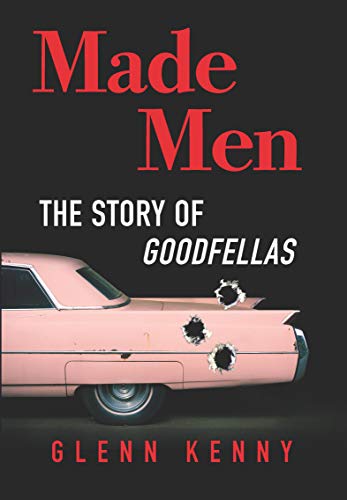 By GLENN KENNY (Hanover Square Press; 2020)
By GLENN KENNY (Hanover Square Press; 2020)
You simply cannot go wrong with this book, which explores one of the greatest films of our age: Martin Scorsese’s 1990 masterwork GOODFELLAS. A modest success in its day, the film has gone on to become an iconic American classic, and speaking as one who was lucky enough to experience GOODFELLAS in its intended big screen form back in 1990, I fully understand the adulation.
The author of this book is Glenn Kenny, a New York Times film critic who adroitly plumbs the background and production history of GOODFELLAS. No, this isn’t the best film study published in 2020 (that designation goes to Stephen Bissette’s THE BROOD), but the picture it paints is a thorough one, answering most every question one could possibly think to ask about GOODFELLAS and its creators. Included are copious interviews with nearly all the actors and technicians, a scene-by-scene breakdown of the film and some astute critical analysis.
GOODFELLAS, for the two or three of you who don’t already know, is a gangster epic notable for its unflinching (for 1990) violence and flashy filmmaking that depicts the glamor and ugliness of mob life with equal vigor. It was based on the 1985 book WISEGUY by Nicolas Pileggi, which told the true story of the late Henry Hill, a former mobster who acted as an uncredited consultant on the film.
Hill’s story, before and after GOODFELLAS, is voluminously covered here (even though direct interviews with the man, who died in 2012, were impossible). We learn he wasn’t quite the upstanding fellow the film presented him as, having been prone to alcoholism, spousal abuse and shameless embellishments of his mob years.
We also learn about the film’s rocky development, which is still plagued with controversy. Specifically, its executive producer (and Scorsese’s ex-wife) Barbara de Fina claims she deserves a more prominent credit, something with which the accredited producer Irwin Winkler—as quoted here—sort of agrees, while Scorsese is conspicuously silent on the matter.

The technical details are also covered, such as the iconic nightclub tracking shot, in which the camera, contrary to what we see, apparently moved in a full circle. The “How am I funny?” scene was created entirely by Joe Pesci, and its filming reportedly so upset Warner Bros. honcho Terry Semel that he cancelled a later scene in a Tampa zoo (which ended up being filmed in Queens). Prior to an onscreen confrontation with Robert De Niro, actor Johnny Williams recalls De Niro telling him “Johnny, somewhere—I don’t care where it is—just tell me not to get excited”; Williams did just that, and what resulted is cinematic gold. The author even includes a recipe from Henry Hill, for “Michael’s favorite Ziti with Meat Sauce” (the dish Ray Liotta is seen preparing in the film’s climax).
Attesting to the thoroughness of Mr. Kenny’s approach, we also get a lengthy analysis of all the famous rock ‘n’ roll songs played in the film (which makes for quite a list) and how they relate to the images they accompany. It’s in this section that, we’re informed, “Scorsese lets nostalgia have its way with us” and “Once Henry gets out of prison, the songs come at you almost nonstop, and they’re always, always pointed, not just atmospheric.”
Ultimately, though, everything I’ve just written is moot, as if you’re a GOODFELLAS fan you need to read this book. It’s that simple. If, on the other hand, you don’t fall into that category, then what the Hell is wrong with you?
